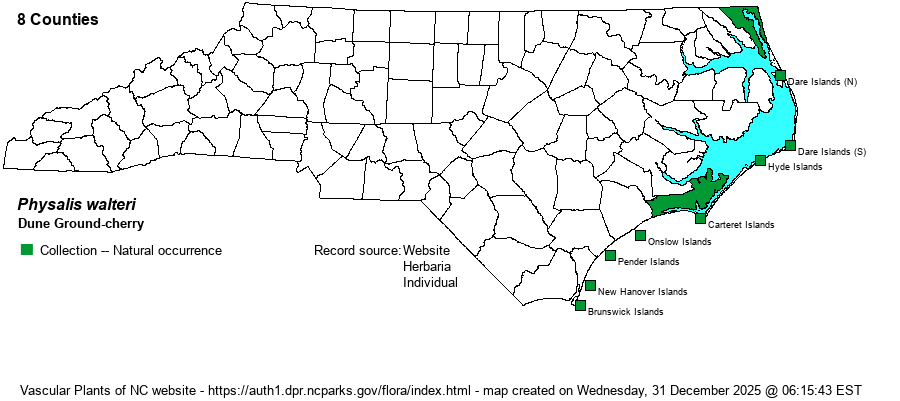| Author | Nuttall | |
| Distribution | Strictly coastal, occurring in all eight coastal counties.
The species occurs throughout FL, but northward it is strictly coastal, to southeastern VA; west to southern MS. | |
| Abundance | Fairly common to frequent within its narrow NC range. | |
| Habitat | In the state it is limited to sandy soil of dunes, sand flats, and openings and edges of maritime forests and shrub thickets. |
| Phenology | Blooms from May to September, and fruits soon after flowering. | |
| Identification | This is one of the shorter ground-cherries, reaching about 1 foot tall, widely branching. It is pubescent over the entire plant. The leaves are elliptic to ovate, rounded at the tip, and entire on the margins; they range to about 2 inches long and 1-inch wide. All other Physalis in the state have toothed, lobed, or wavy leaf margins. The flowers are typical of the genus, bell-shaped, dangling downward, and yellow in color. This is the most easily identified of the state's nine native species of the genus owing to its strictly maritime sand habitats and the entire leaves. | |
| Taxonomic Comments | The species was often named as P. viscosa in former years.
| |
| Other Common Name(s) | Walter's Ground-cherry | |
| State Rank | S3 | |
| Global Rank | G4 | |
| State Status | | |
| US Status | | |
| USACE-agcp | | |
| USACE-emp | | |

